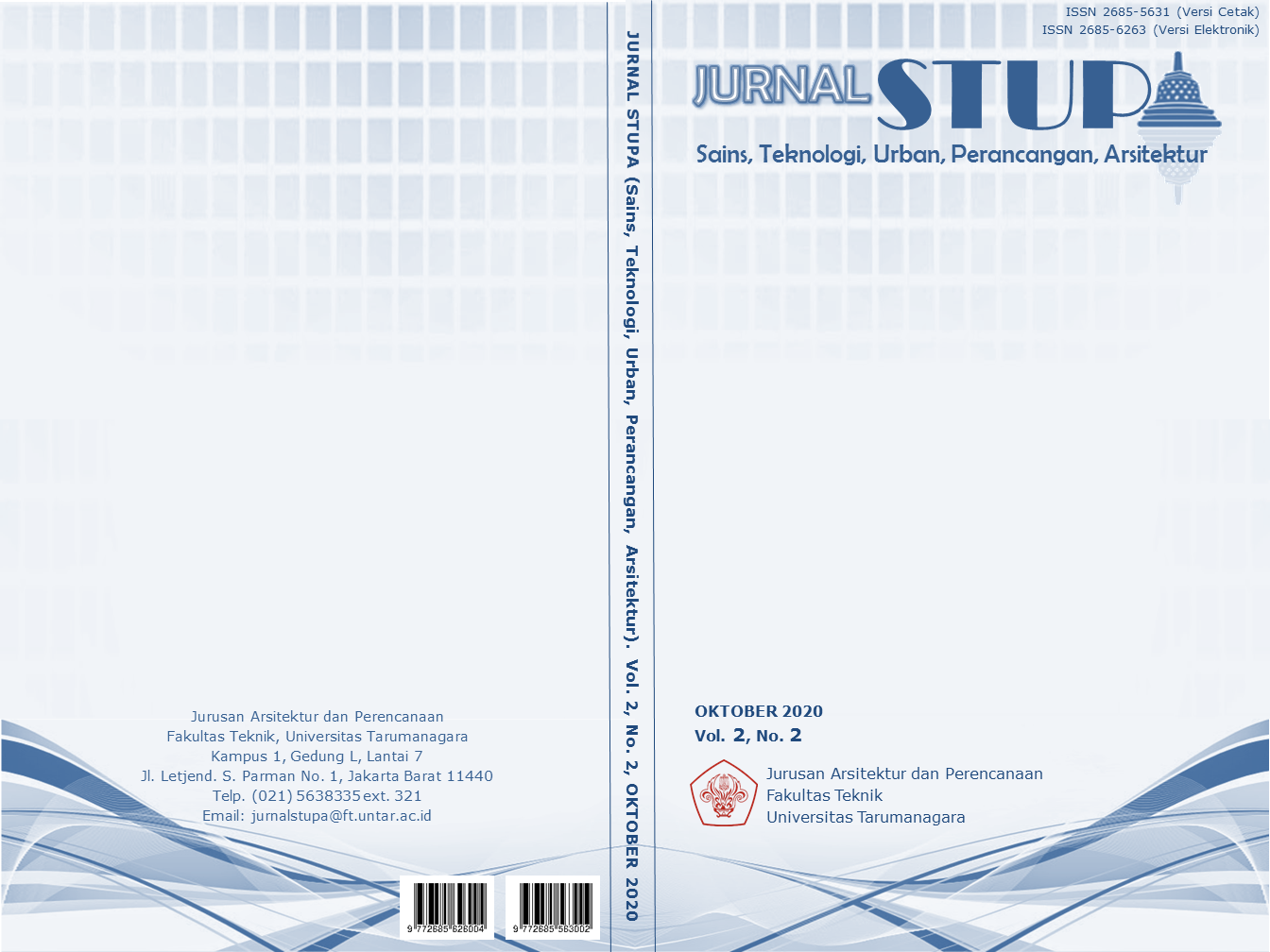KOMUNITAS PELAJAR UTAN KAYU SELATAN
Main Article Content
Abstract
This study aims to find a third place for reducing social disparity, encouraging social growth, supporting social interaction between different social echelons, and providing a decent place for future educated generations. Located in Jl. Galur Sari Timur no. 8, Utan Kayu Selatan, which is situated in East Jakarta, the highest social inequality at Jakarta Province and also a district with the highest education institution. The result of this research leads to the right third place for this area, which is a community based learning center, under the name of Southwood Learning Center, which accommodates meeting point for local learners to interact and exchange ideas, encourage social growth in education and modern perceptions in the process of reducing social inequalities. In the designing process, the designer considered area history, which was a forest during the Mataram kingdom period, present local building forms, the function and character of education, and the traits of a third place as a medium for social interactions and reflections.
Keywords: East Jakarta; Social Disparity; Learners; Southwood Learning Center
Abstrak
Tulisan ini merupakan hasil penelitian yang bertujuan untuk merancang sebuah wadah yang dapat mengurangi kesenjangan sosial, mendorong kemajuan hidup masyarakat, mendukung interaksi dari berbagai golongan, serta menyediakan wadah bagi para penerus bangsa yaitu para pelajar. Berlokasi di Jl. Galur Sari Timur no. 8, Utan Kayu Selatan, yang terletak di Jakarta Timur, sebagai kota dengan kesenjangan sosial tertinggi di Provinsi DKI Jakarta, serta kawasan dengan lembaga pendidikan terbanyak pada daerah tersebut. Hasil penelitian menyimpulkan bahwa fungsi tempat ketiga yang diusulkan untuk wilayah ini adalah Perkumpulan Pelajar Utan Kayu Selatan, di mana terciptanya titik temu pelajar sekitar untuk berinteraksi dan bertukar ide, serta mendorong kehidupan masyarakat sekitar untuk menjadi lebih berwawasan luas dan modern untuk mengurangi kesenjangan sosial. Dalam proses perancangannya dipertimbangkan sejarah kawasan, yaitu area hutan dari zaman kerajaan Mataram, kondisi massa sekitar, fungsi dan sifat dari pendidikan, serta sifat third place sebagai sarana interaksi dan refleksi.
Article Details
References
Akcan, E. (2018). Open Architecture: Migration, Citizenship, and the Urban Renewal of Berlin-Kreuzberg. New York: Birkhauser.
Koot, F. (2017). Three New Models to Boost Education. Retrieved July 5, 2017, from Medium: https://medium.com/the-gentle-revolution/three-new-models-to-boost-education-bc3a1437d3b2
Machmud, Z. H. (2012). 212 Asal-Usul Djakarta Tempo Doeloe. Jakarta: Ufuk Press.
National Research Council. (2000). How People Learn: Brain, Mind, Experience, and School: Expanded Edition. Washington D.C.: National Academy Press.
Rahadian. (2007). Kajian Aplikasi Gaya Arsitektur Candi Peninggalan Mataram Kuno di Jawa. Bandung: Universitas Katolik Parahyangan.
Sofia Aziz, Syed Farrukh Raza. (2001). Guide Manual for Community Learning Centers. Islamabad: UNESCO.
Tierney, W. G. (2015). Rethinking Education and Poverty. Baltimore: Johns Hopkins University Press.
Trancik, R. (1986). Finding Lost Space: Theories of Urban Design. Toronto: John Wiley & Sons Inc.
TribunStyle. (2020). Retrieved January 30, 2020, from https://style.tribunnews.com/2020/01/30/viral-mcd-tempat-makan-bukan-tempat-study-pelajar-tegur-pengunjung-ribut-malah-malu-sendiri?page=2
UNESCO, A.-P. C. (1999). Role of Community Learning Center for the Promotion of Literacy and Quality of Life April 1999. Nepal: UNESCO.



